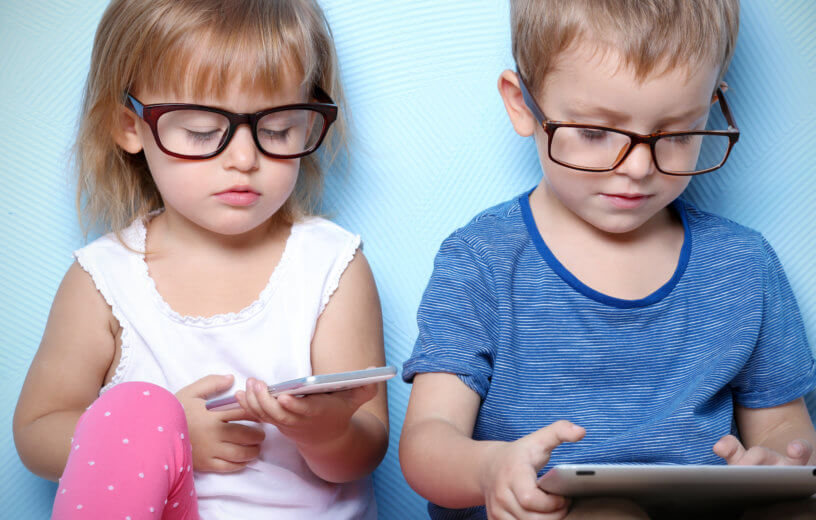ANN ARBOR, Mich. — Half of parents are blind to how much screen time can damages their children’s vision, according to a new poll. Researchers from the University of Michigan say parents overlook simple steps to protect their child’s eyesight, such as wearing blue-light blocking glasses and making their children play outdoors more.
Studies show spending more hours on smartphones, tablets, and other digital devices, and less time outdoors, is harmful.
“Many parents may not be aware of both the short and long-term health issues linked to excessive screen time, including its effect on children’s eyes,” says the director of the poll Sarah Clark in a university release.
“Our findings suggest that some parents may have inaccurate perceptions of activities that affect their child’s eye health and vision and how to minimize risks.”
The findings come from on a nationally-representative survey of 2,002 parents of children between three to 18 across the U.S. One in seven say their child has not had a vision test in two years.
The pandemic has been the worst thing for eyesight
During the pandemic, studies show that screen time among young students soared among all age groups. The phenomenon also appears to be causing a rise in worsening eyesight. Millions of pupils were forced to switch to remote learning, while social media use skyrocketed as well.
Ophthalmologists have warned of an epidemic of nearsightedness, or myopia, across the world. It can lead to more serious eye problems later in life. The condition in children has increased dramatically over the past 30 years. Studies suggest spending more time outdoor protects against weakening eyesight.
“Parents should encourage at least one to two hours of outdoor time per day because exposure to natural light benefits eye development,” Clark says. “Parents should enforce family rules to ensure children have a sustained period of non-screen time during the day. This is especially important during summer months when they’re off from school and may have less structured downtime.”
Some research also links staring at digital devices up close — like reading from or using a tablet — with nearsightedness.
“It’s important time to think about myopia risks for children because kids with this condition often become more nearsighted over time,” notes study consultant Dr. Olivia Killeen. “The age of myopia onset is the most significant predictor of severe myopia later in life.”
Fewer than 1 in 3 parents believe wearing sunglasses has a major impact
Just two in five have their child wear protective eyewear. However, researchers say they reduce ultraviolet radiation damage, which can contribute to eye problems in older age.
“While parents often make sure their children’s skin is protected with sunscreen, they may not think about protecting their eyes from the sun as well,” Clark continues.
Less than a third of parents in the poll say their child wears protective glasses or goggles during contact sports. Clark recommends seeking advice from health providers for safe and comfortable eyewear for sports like lacrosse, tennis, baseball or softball, and basketball.
Most parents say their children wear them while working with tools and playing shooting games with “Nerf” guns or paintball. After time spent on screens, the most common factors they identified as impacting children’s vision and eye health are reading in poor light, sitting close to the TV or computer, diet, and blue light exposure from screens.
“Some parents may still follow advice from past generations on protecting kids’ eyes,” Clark explains. “Reading in poor light or sitting close to the TV can cause eye fatigue or strain, but they will not do any permanent damage or cause long-term eye problems.”
Fewer than a third of parents say their children wear glasses that block blue light — which impacts circadian rhythms and makes it harder to fall asleep. Experts recommend children stop blue light screen use at least one hour before bedtime.
“Children should get vision tests at least every two years to make sure eyes are developing properly,” Clark concludes. “It’s important to identify and treat vision problems as early as possible, because undiagnosed issues can lead to serious eye conditions in the future, including permanent vision loss.”
Last year, an analysis of the online habits of 60,000 families in the U.K. found website and app visits more than doubled during the pandemic. Another study of more than 120,000 Chinese children found a three-fold increase in nearsightedness among six to eight-year-olds in 2020.
U.S. health experts recommend no more than two hours of screen time a day for young children older than two.
South West News Service writer Mark Waghorn contributed to this report.

